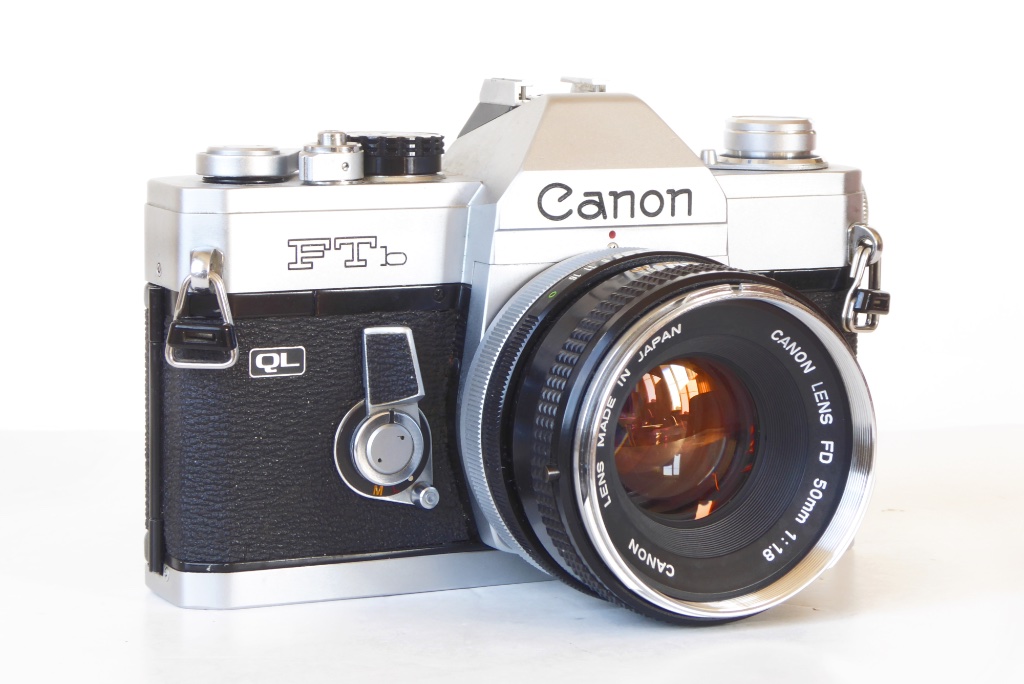
Noticeable by it’s Absence
Of all the cameras being hyped by today’s uber-trendy wunderkinds on the web like the Canon AE-1, the Minolta X-700 and the Pentax K1000, the FTb is noticeable by its absence. But, it is the forgotten wonder from the days when stuff was built to last. Manufactured from metal hammered out by Canon and just maybe, the best camera to ever come out of Canon, at least according to this Canon FTb Review! Sadly, it’s been so forgotten that even me, a serious photographer when the FTb was in its heyday, had forgotten all about it entirely until I was browsing a camera store in Tokyo and spotted one.
The FTb just goes to show that if anyone can Canon could….at least back then. The FTb is built like a Swiss watch. I can’t hardly blame Canon for wanting to move the world forward to plastic, electronic junk like the Canon AE-1 and its progeny. After all the AE-1 revived Canon’s fortunes and went on to become the best selling SLR of all time but hype and volume doesn’t mean good. There’s an old German saying that 10,000 flies can’t be wrong and that may well be true -but just look at what they are buzzing around!
The AE-1 paved the way for Canons dominance of the market but it’s a shame that in the rush forward for technology old fashioned virtues like longevity got trampled underfoot. The AE-1 may well have been a big seller but its success came not from excellence of the product but a multi million dollar advertising campaign. The FTb though comes from a period when excellence came as standard and feels like it was designed by people who actually used cameras rather than a consumerist piece of plastic.
The Canon FTb was among the last of the super high-quality cameras designed for the serious amateur photographer and was in production from 1971 to 1976 when the AE-1 supplanted it as Canons leading pro-sumer camera.
Built to the same standards as the Canon F1 professional line camera the FTb had to lose a few features to get the price right for the serious amateur (the F1 was aimed squarely at the deep-pocketed pros).
The cutbacks aren’t very much for most people to worry about today – the Canon FTb lost the interchangeable prisms, focus screens and motor drive, and the titanium shutter curtain and replaced this with rubberised silk. A modern user won’t miss the interchangeable prism or focus screen because even if you could find one for the F1 the price would be as much as for the camera. But, like the pro-level F1 the humble FTb has silky smooth operation, a slick winder, easily one of the best shutter release pull-offs of anything I have ever shot and on top of that thanks to what Canon called the ‘Shockless Mirror System’ – the camera is smooth as silk on firing with almost no vibration or mirror slap. It’s all helped by the weight and solid construction of the Canon FTb which helps cut down any vibration .
Solid in the hands with slick and positive feel the Canon FTb is a complete delight to shoot with.
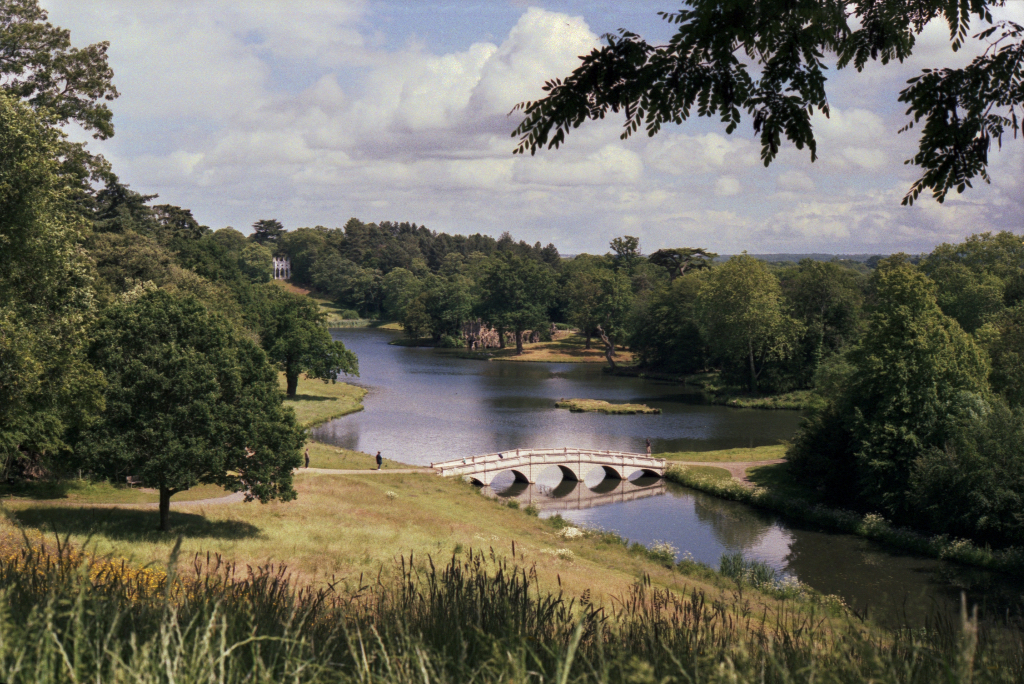
Metering with the FTb is simplicity itself, like the Minolta SRT101 it uses a match needle arrangement but unlike many match needle systems Canon really used their noodles and the meter only covers the range of apertures the mounted lens can support. Many match needle systems have all possible readings in the system which means the display can be crowded. When you mount a lens on the FTb only the possible aperture range of the lens is available AND the needle auto-ranges based on the lens plus there’s a rectangle in the viewfinder which gives you the spot where the meter will take its reading from. This is around 10% of the viewfinder area. It’s a kind of primitive spot meter and works very well indeed.
As a handy warning when you turn the ASA or shutter speed to a combination that will take the meter out of range you get a red flag appear in the viewfinder – this is all of course mechanical and unlike the Minolta SRT-101 where its all done with springs and strings on the FTb its all done with gears so its tougher and more durable.
The FTb can run with any FL lens with stop down metering but it runs better with FD lenses for open aperture metering. I often use an FL lens but do find stop down metering a pain, so I prefer to use FD compatible lenses with mine. It’s worth mentioning here that the stop down control on the FTb is beautifully positioned. On the earlier version, the stop down is very sensitive and positive with a great feel thanks to the larger lever that’s contoured ergonomically for the end of your middle finger. It’s easily the best positioned and feeling stop down lever of anything I have ever used, Canon never did get it right again with the stop down lever but to be fair almost no one else did either.
Focusing is via a micro prism collar or just using the matte area of the focus screen. The viewfinder is about par with almost any other camera of the period. The Olympus OM-1 has a bigger field of view, the Minolta X-700 is brighter – neither of these were around when the FTb was released! Compared with cameras like the Pentax K1000 the Canon FTb is as good if not better. The FTb has a very finely ground screen that’s fairly bright compared to its peers so its quite easy to focus on the matte area.
To (FT)b or n(ot) to (FT)b ? ……That is the question. The FTb was given a mid-life upgrade in 1973 and the newer version is unofficially known as the FTb-n or nFTb and bad advice is often handed out on film fan forums regarding the latter model with people ignorant of the construction of the camera always touting the later model ‘cos you get a shutter speed display in the viewfinder’ . The upgrade introduced all of the following changes:
- a plastic tip to the winding lever (which is nice),
- a shutter speed display in the viewfinder (some people like this),
- a different self-timer lever (nicked from the Canon F1)
- a plastic cover to cover off the PC socket on the front of the camera (why? Well some old school flashes could deliver a whopping 300v when triggered and they discharged this into the cameras flash circuit – this 300v would turn up at the PC socket which meant if your fingers were on it when the flash fired you might be tempted to say ‘ow!’),
- a larger shutter release button (very slightly bigger – you’ll never notice).
There is though a huge downside to the ‘upgrade’: Some of its internals were changed out for plastic parts, and the wonderfully smooth roller bearings on the earlier models were replaced with plastic parts. Most people on forums (or many other Canon FTb reviews) will tell people to get the newer version as it has the shutter speed displayed in the viewfinder, this is of very limited use on a camera with no motor drive and with its speed shutter selector on the top of the camera and means you trade an ‘extra’ which is of not much use for build quality.

So, If you have the choice to get old or new versions and you don’t particularly need the shutter speed showing in the viewfinder, and lets face it who does, then get the older, original version. It’s a far nicer camera with smoother operation. Evertyime you wind on the buttery smooth winder you will know why.
For those who faff with loading film the FTb followed on from the Canon FT with a quick load (QL) system. You just pull the film out to a mark on the rear of the camera and close the back. The camera will sort out getting the film on the take up spool for you. Neat eh? Very handy for those who struggle to get film into a camera. It’s fast and simple.
On top of all the good stuff already mentioned it’s worth repeating – the camera is built to a very high standard throughout – even the later FTbn is far better made than many other cameras even back then but the original FTb is a masterpiece. It’s relatively easy to work on so almost any professional tech should be able to fix one if you run into a problem. The F1 for all its flash is reputed to be a bitch when things go wrong – and that translates into fewer techs willing to work on one and bigger repair bills.
Unlike the AE-1 electronics are at a minimum and not critical to camera operation, there are no fiddly Teflon cords to break and because it was built like a tank they generally survive fine.
Because most of these were bought by serious amateurs there’s more of them in decent condition compared to the AE-1 which tended to be bought by mums and dads who were clueless about photography and as a result many AE-1s were ill kept or unused leading to headaches – like the notorious Canon ‘cough’. There’s no risk of the Canon ‘cough’ on the FTb – its internals are entirely different from the A series and it was built to a much higher quality.
No Canon FTb review would be complete without downsides, and at least for me, the biggest downside is the daft battery check arrangement. To check battery status you have to set the film speed dial to ASA 100 and set the shutter to 1000th so it’s not terribly convenient. Back in the day when these were being made most people had a mercury battery in the camera which would probably last longer than they would be alive so the need to check battery state was few and far between.
These days due to mercury batteries being no longer available you are forced into Alkalines, Silver cells or Zinc Airs with much shorter lifetimes – meaning you need to use the battery check a bit more frequently than old gits like me or your grandad ever did back in 1971.
The Canon FTb was designed with mercury batteries in mind outputting 1.35 volts. It’s a simple enough camera to recalibrate the meter for a pro – you need a calibrated light source – or failing that just use a battery adapter and a Zinc Air (check out my guide for powering these old cameras here).
The downside for any weedy types is weight – it’s a hefty old bit of kit, with an early Canon 50mm f1.8 FD lens an FTb tops the scales at almost 800grams – yes almost a kilo of weight! As heavy as a Nikon F with Photomic finder and lens. All those metal gears and ball bearings and a solid chassis with metal everything add up. It’s a small price to pay though for reliability and vibration free shooting.
Thanks to the Canon AE-1 fanboys the FTb has been relegated to the weeds and as a result can often be found quite cheap. When buying you need to watch out for prism deterioration. Canon used a foam cover on the prism, over time the foam decays and as the foam dissolves the acidity of the foam will slowly eat the prism. So if you get one make sure the prism is good – it will usually show itself as two lines in the viewfinder. To fix this you need a new prism and these are hard to come by. If it doesn’t have this issue when you buy it then you need the top off pronto to get that foam out before this problem happens. This is a common problem with the FTb and also the Olympus OM-1. Its not a hard job to manage to get the foam out of an FTb and its covered by a handy guide I wrote as part of this article here.
Another issue especially with the later FTb-n is some of the plastic gears related to its meter can be stripped so as with any classic camera either buy from a good source or be ready to fully check the camera out. Stripped gears are much less likley on the earlier FTb model.
Other minor issues are of course decaying light seals and mirror bumpers common to all of these classic cameras. These are covered for the Canon FTb in my light seal guide here.
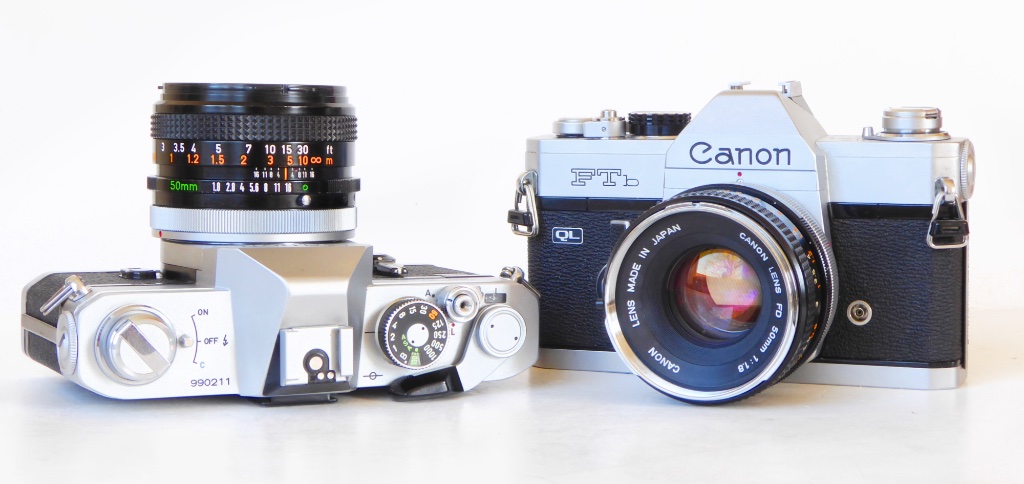
In a nutshell…
To sum up the Canon FTb review – it lacks some features of flashier, later cameras for sure, she comes from an age of fully manual cameras after all where people were expected to read a manual and learn stuff but, like a plain girl in her best frock at a party she may not be the looker but you know she will be nicest to talk to and you have more chance of scoring.
For full technical specs pop over to the Canon Museum
Further Reading
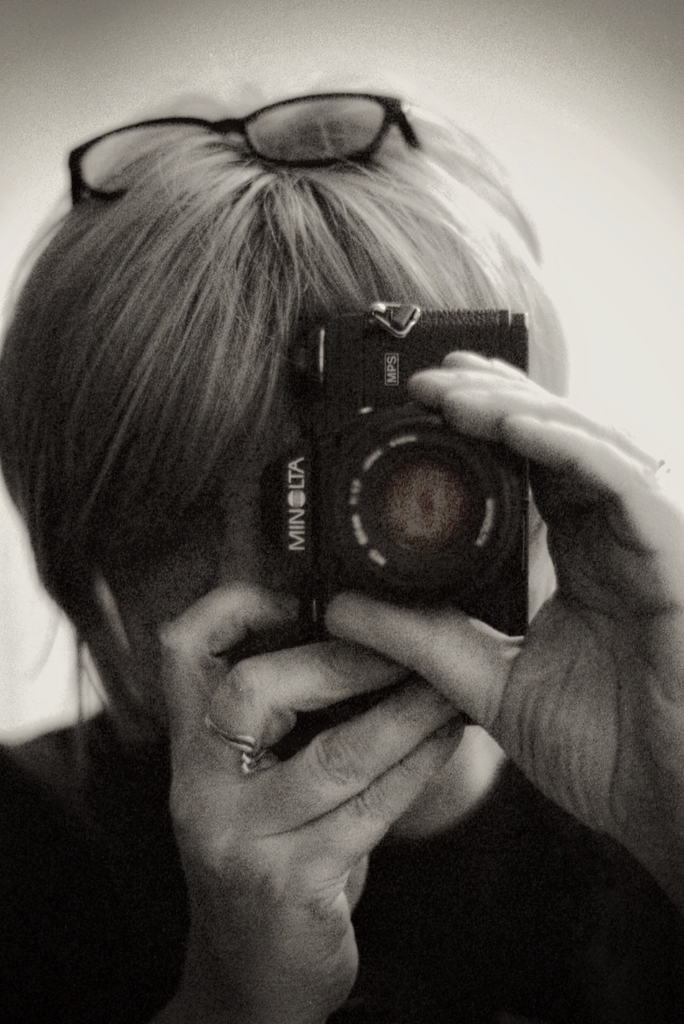
Mel is one of the driving forces behind High 5 Cameras and writes all our articles.
Starting serious photography back in 1972. Over the years she got to shoot film with most of the major brands in 35mm and large format as both a studio photographer and content provider for websites in the early life of the web. These days she is rediscovering photography and has become the GOTO person for knowledge on camera repair advice.


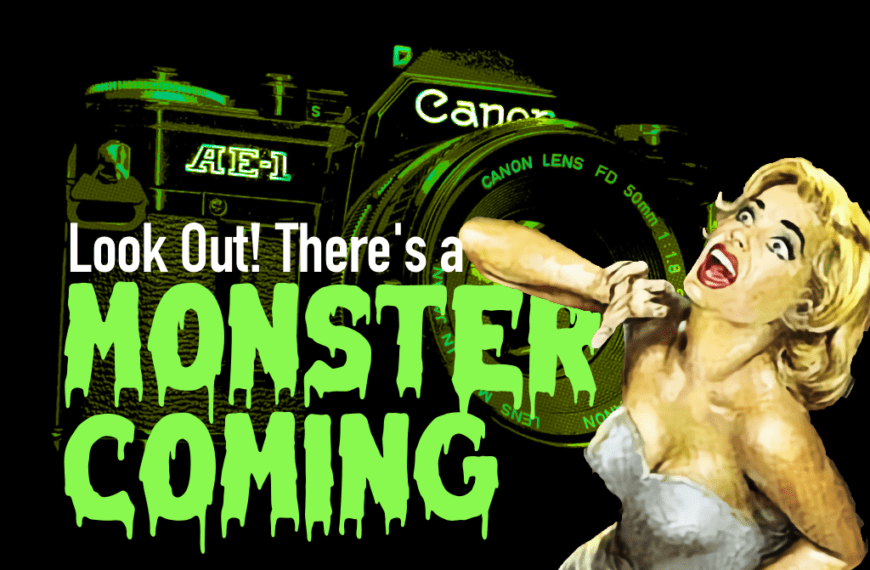
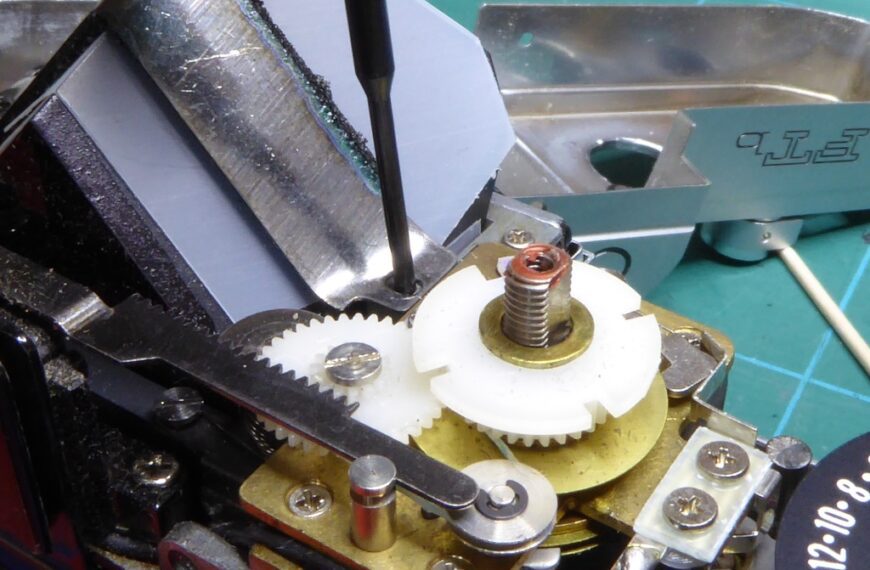
Thanks for the write up! I have an FTb I inherited in high school, used it for photography class then. I’m dusting it off now and want to get back out and shoot. This article was super helpful!
We wish you happy snapping – the FTb is a very beautiful camera to work with.
Thank you for the great article. I bought my FTb in 1974 at the age of 15. I had to save up for a long time and also some summer jobs were necessary. In the 90s I made a big mistake and lent my Canon to an incompetent one and unfortunately got it back completely destroyed. I missed my FTb for decades. Two months ago I bought one from the same series (FTb-n 200,000 series) on ebay. The first test film catapulted me straight into the 70s. Hope the prism will hold out a little longer. :::)) Greetings from Germany
It’s a great camera and we always enjoy shooting with ours. No need to hope for the prism holding out – we have an easy to follow guide on getting the prism foam out on the site. If you dont feel capable of doing it then its well worth having the work done by a professional tech – the alternative is the prism will be destroyed and they are very hard to find replacements for.
May we wish you much happy shooting with your FTb – they are marvellous beasts.
Agree to Bee El : This article is very helpful ! And detailed ! I will read it more times, so much important informations !
But i miss one thing on the FTb, a split screen in the viewfinder. When the eyes are not so good, you have difficulties while focusing.
Therefore i use a Canon T70 for my FD lenses. The viewfinder is very bright and it has an split screen, you can use even ” dark ” zooms like an FD 35-70 f4.
But apart of this problem i love the FTb too.
Yes – I am ageing too and find a split screen helpful with my old eyeballs. I mostly shoot using zone focusing and keep the aperture as closed as possible which gives me the best chance of getting the focus right.
Glad you likes the article though – the FTb is a beautiful beast and much under appreciated.
Excellent review. I have my original FTb in black. When I could no longer get mercury batteries, I just metered a blank wall or something with an EOS camera and 50mm f1.8 at ISO 100 film and a shutter speed of 125 wide open.
I then put a 1.5v battery from CVS in, set the FTb to 125 and the f1.8 lens wide open turn the ASA to align the needle and circle, note the difference from 100.
That difference is then set in the future uses as well. Doing it for decades with all my old Canon cameras and no issues. Also they are so old who knows if the meter is accurate anyway.
So don’t fear the battery issue.
It’s as good a fix as any but you need to be aware the FTb has a semi-spot function and its meter is only sensitive in the square in the viewfinder. Call us obsessive but we wont sell a camera we are not 100% happy with. Junkers go to eBay but on our site we only sell primo and we always adjust the meters using a calibrated light source so we can be sure the meter is operating inside the manufacturers original specification. Your quite right though that old cameras quite often have degraded meter cells and of course the technology back then was nowhere near as accurate or reliable as more modern cameras.
Glad you enjoyed the article – hope you will come back and see other stuff as we are always updating.
[…] her fantastic FTb review, Mel at high5cameras writes that the original FTb’s mechanics run more smoothly than the second […]